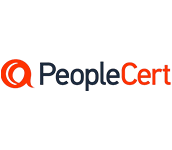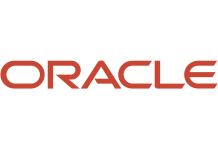- 087 941 5764
- impactful@lrmg.co.za


The Building applications and solutions with Microsoft 365 core services course is designed for persons who are aspiring to the Microsoft Teams Application Developer role.
In this course, students will learn how to build collaboration solutions leveraging 4 central elements of the Microsoft 365 platform: implementing Microsoft identity, working with Microsoft Graph, extending and customizing Microsoft 365 with SharePoint Framework, and building applications for Microsoft Teams.
In Implement Microsoft identity, students will learn to implement Microsoft identity including registering an application, implementing authentication, configuring permissions to consume an API, and creating a service to access Microsoft Graph. In Work with Microsoft Graph, students will learn how to access user data, explore query parameters, manage a group lifecycle, access files, and optimize network traffic using Microsoft Graph.
In Extend and customize Microsoft 365 with SharePoint Framework, students will learn about SharePoint Framework web parts, extensions, and how to package and deploy a SPFx solution. In Build apps for Microsoft Teams, students will look at the components of a Teams App, work with webhooks, tabs, conversational bots, and other Microsoft Teams app capabilities. They will also learn to deploy Microsoft Teams apps.
Our courses have flexible delivery options:
This course is intended for:
Students in this course are interested in the Microsoft 365 development platform or in passing the Microsoft Teams Application Developer Associate certification exam. Students should also have 1-2 years experience as a developer. This course assumes students know how to code and have a basic understanding of REST APIs, JSON, OAuth2, OData, OpenID Connect, Microsoft identities including Azure AD and Microsoft accounts, Azure AD B2C, and permission/consent concepts.
Learners should start this course already having the following skills:
Need additional information?
We are here to support your growth every step of the way
Get in touch
The Building applications and solutions with Microsoft 365 core services course is designed for persons who are aspiring to the Microsoft Teams Application Developer role.
In this course, students will learn how to build collaboration solutions leveraging 4 central elements of the Microsoft 365 platform: implementing Microsoft identity, working with Microsoft Graph, extending and customizing Microsoft 365 with SharePoint Framework, and building applications for Microsoft Teams.
In Implement Microsoft identity, students will learn to implement Microsoft identity including registering an application, implementing authentication, configuring permissions to consume an API, and creating a service to access Microsoft Graph. In Work with Microsoft Graph, students will learn how to access user data, explore query parameters, manage a group lifecycle, access files, and optimize network traffic using Microsoft Graph.
In Extend and customize Microsoft 365 with SharePoint Framework, students will learn about SharePoint Framework web parts, extensions, and how to package and deploy a SPFx solution. In Build apps for Microsoft Teams, students will look at the components of a Teams App, work with webhooks, tabs, conversational bots, and other Microsoft Teams app capabilities. They will also learn to deploy Microsoft Teams apps.
Our courses have flexible delivery options:
This course is intended for:
Students in this course are interested in the Microsoft 365 development platform or in passing the Microsoft Teams Application Developer Associate certification exam. Students should also have 1-2 years experience as a developer. This course assumes students know how to code and have a basic understanding of REST APIs, JSON, OAuth2, OData, OpenID Connect, Microsoft identities including Azure AD and Microsoft accounts, Azure AD B2C, and permission/consent concepts.
Learners should start this course already having the following skills:
Certified global best practices in the new technologies…




Please complete the form with your information and one of our experts will get back to you soon.

Get in touch
Email: impactful@lrmg.co.za
Tel: +27 87 941 5764